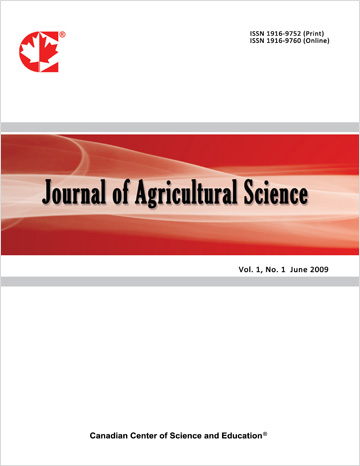Winter Wheat Tolerance to Clopyralid Applied in the Fall, Spring, or Fall Followed by Spring
- Nader Soltani
- Christy Shropshire
- Peter H. Sikkema
Abstract
Limited information exists on the sensitivity of winter wheat to clopyralid applied in the fall, spring, or sequentially [fall followed by (fb) spring] under Ontario environmental conditions. Six field experiments were conducted over two years (2023 and 2024) near Exeter and Ridgetown, Ontario, to evaluate the effects of clopyralid (100, 200, and 400 g ai ha-1) applied in the fall, spring, or sequentially (fall fb spring) on winter wheat injury, height, seed moisture content, and yield. No visible injury was observed at 1, 2, and 4 weeks after application with clopyralid applied in the fall, spring, or sequentially at the evaluated rates. Clopyralid applied in the fall at all rates caused no injury to winter wheat; in contrast, when applied in the spring clopyralid caused 3, 7, and 14% visible injury at 100, 200, and 400 g ai ha-1, respectively. Sequential applications of clopyralid (fall fb spring) resulted in 4, 9, and 17% visible injury at the same respective rates. Clopyralid application at 100, 200, and 400 g ai ha-1 in the fall, spring, or sequentially had no significant effect on winter wheat height or seed moisture content. Clopyralid applied at 100, 200, and 400 g ai ha-1 in the fall did not affect winter wheat yield. Clopyralid applied at 100 and 200 g ai ha-1 in the spring had no impact on yield, but when applied at 400 g ai ha-1, it reduced winter wheat yield by 19%. Sequential applications at 100 fb 100 and 200 fb 200 g ai ha-1 also had no significant effect on winter wheat yield, while the 400 fb 400 g ai ha-1 treatment reduced winter wheat yield by 17%. These results conclude that clopyralid applied in the fall caused no visible wheat injury and no decrease in wheat height or yield. Clopyralid, applied in the spring at 100 and 200 g ai ha-1 caused 3 and 7% visible wheat injury, respectively but no decrease in wheat height or yield. Clopyralid applied in the spring at 400 g ai ha-1 caused up to 17% visible wheat injury and reduced wheat yield by up to 19%. These results conclude that clopyralid at the label rate applied in the fall, spring, or sequentially has no adverse effect on winter wheat; however, where there is a spray overlap clopyralid can cause unacceptable wheat injury and yield loss.
- Full Text:
 PDF
PDF
- DOI:10.5539/jas.v17n5p21
Journal Metrics
- h-index: 67
- i10-index: 839
- WJCI (2023): 0.884
- WJCI Impact Factor (2023): 0.196
Index
- AGRICOLA
- AGRIS
- BASE (Bielefeld Academic Search Engine)
- Berkeley Library
- CAB Abstracts
- ChronosHub
- CiteSeerx
- CNKI Scholar
- Copyright Clearance Center
- CrossRef
- DESY Publication Database
- DTU Library
- e-Library
- EBSCOhost
- EconPapers
- Elektronische Zeitschriftenbibliothek (EZB)
- EuroPub Database
- Excellence in Research for Australia (ERA)
- Google Scholar
- Harvard Library
- IDEAS
- iDiscover
- Jisc Library Hub Discover
- JournalTOCs
- KindCongress
- LIVIVO (ZB MED)
- LOCKSS
- Max Planck Institutes
- Mendeley
- MIAR
- Mir@bel
- NLM Catalog PubMed
- Norwegian Centre for Research Data (NSD)
- Open J-Gate
- OUCI
- PKP Open Archives Harvester
- Polska Bibliografia Naukowa
- Qualis/CAPES
- RefSeek
- RePEc
- ROAD
- ScienceOpen
- Scilit
- SCiNiTO
- Semantic Scholar
- SHERPA/RoMEO
- Southwest-German Union Catalogue
- Standard Periodical Directory
- Stanford Libraries
- SUDOC
- Swisscovery
- Technische Informationsbibliothek (TIB)
- Trove
- UCR Library
- Ulrich's
- UniCat
- Universe Digital Library
- WorldCat
- WRLC Catalog
- Zeitschriften Daten Bank (ZDB)
Contact
- Anne BrownEditorial Assistant
- jas@ccsenet.org
